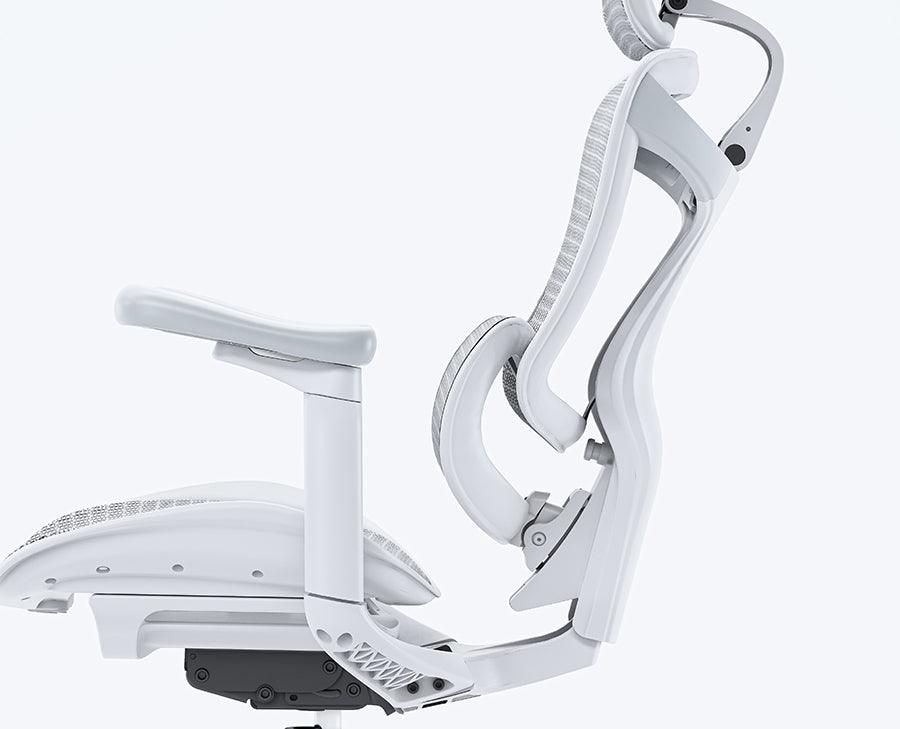Ergonomic chairs are becoming increasingly popular in today's workplace as they promote good posture and reduce discomfort associated with prolonged sitting. These chairs are designed to provide support and comfort, which can help prevent musculoskeletal disorders and improve overall well-being. One of the key features of ergonomic chairs is armrests. But do ergonomic chairs really need armrests? In this article, we will explore the benefits and drawbacks of armrests in ergonomic chairs and provide some tips for choosing the right chair for your needs.
Benefits of Armrests:
Armrests can provide several benefits for individuals using ergonomic chair. Firstly, they provide support for the arms and shoulders, reducing strain and discomfort in these areas. This can be especially important for those who work at a desk or computer for extended periods. The armrests can also reduce the strain on the neck and upper back by supporting the weight of the arms, which can help promote good posture and prevent muscle tension.
Armrests can also help improve overall comfort during prolonged sitting. When the arms are supported, it can reduce pressure on the lower back and hips, making it easier to maintain good posture. The armrests can also enhance stability and balance by providing a surface to lean on or hold onto, which can be beneficial for those with mobility issues or balance concerns.

Potential Drawbacks of Armrests:
While armrests can provide several benefits, there are also potential drawbacks to consider. For example, armrests can limit movement and flexibility, which may be a concern for those who need to reach different areas of their workspace. They can also be an obstacle when trying to get in and out of the chair, which can be particularly challenging for individuals with mobility issues.
Another potential drawback is the increased cost associated with ergonomic chairs that have adjustable or detachable armrests. While these chairs may provide more versatility, they can be more expensive than chairs without armrests.
Lastly, personal preference plays a role in determining whether or not armrests are necessary. Some individuals may find armrests uncomfortable or unnecessary, while others may find them essential for maintaining good posture and reducing discomfort during prolonged sitting.
Factors to Consider When Choosing an Ergonomic Office Chair with Armrests:
When choosing an ergonomic office chair with armrests, there are several factors to consider. Firstly, the type of work being done is important. If the work involves a lot of typing or computer use, armrests may be essential for supporting the arms and shoulders. However, if the work involves more movement or physical activity, armrests may not be necessary.
The height and adjustability of the armrests are also important considerations. The armrests should be adjustable to accommodate different users and provide support at the correct height. The materials and construction of the armrests should also be considered for durability and comfort.
Finally, budget is a consideration. Ergonomic chairs with armrests can be more expensive than those without, so it's important to weigh the benefits and drawbacks against your budget.

Conclusion:
In conclusion, the question of whether or not ergonomic office chairs need armrests ultimately comes down to personal preference and the specific needs of the individual. While armrests can provide support and comfort during prolonged sitting, they can also limit movement and flexibility. When choosing an ergonomic chair with armrests, it's important to consider factors like the type of work being done, the adjustability and materials of the armrests, and your budget. With the right ergonomic chair, you can improve your posture, reduce the risk of developing musculoskeletal disorders, and increase productivity and efficiency.



































